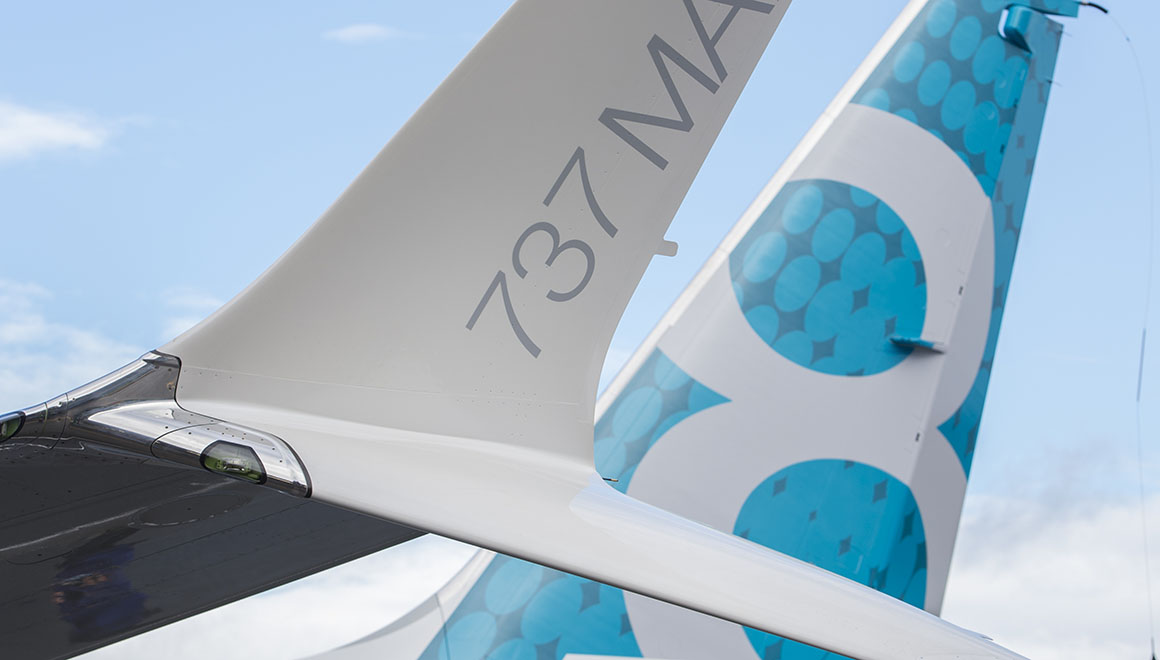
Boeing says it has commenced implementing the recommendations of an independent review into the company’s engineering and aircraft design that was conducted after two fatal crashes involving the 737 MAX.
The recommendations, announced on September 25, called for the establishment of a product and services safety organisation along with a slew of other measures to sharpen the focus on safety in the wake of two tragic 737 MAX accidents involving Lion Air and Ethiopian Airlines that left 346 people dead. An anti-stall feature installed on the 737 MAX has been implicated in both tragic events.
“My team and I embrace our board’s recommendations and are taking immediate steps to implement them across the company in partnership with our people, while continuing and expanding our ongoing efforts to strengthen safety across Boeing and the broader aerospace industry,” Boeing chief executive Dennis Muilenburg said in a statement on Monday (US time).
Muilenburg said the new product and services safety organisation would unify safety-related responsibilities that were currently managed by teams across several Boeing businesses and operating units.
It will be led by vice president of product and services safety Beth Pasztor, who would report directly to the Boeing board’s aerospace safety committee and Greg Hyslop, the company’s chief engineer and senior vice president of engineering, test and technology.
Pastor, who was previously vice president of safety, security and compliance at Boeing Commercial Airplanes, would also oversee the accident investigation team and safety review boards as well as the Organisation Designation Authorisation, the company’s engineering and technical experts who represent the Federal Aviation Administration (FAA) in aircraft certification activities.
Also, Muilenburg said Boeing’s engineers would now report directly to Hyslop, whose focus will be on the health and capability of the company’s engineering function and related needs.
“These changes will enhance our team and amplify our focus on safety, while benefiting our customers and operational performance, and intensify our focus on learning, tools and talent development across the company,” Muilenburg said.
https://twitter.com/BoeingCEO/status/1178710166738522115
Another recommendation called for Boeing to establish a design requirements program to “strengthen a culture of continuous improvement, learning and innovation that will raise the visibility and transparency of all safety and potential safety reports in partnership with commercial and defence customers and other stakeholders”.
This, the company said, would ensure flight deck designs would continue to anticipate the needs of future pilot populations.
Other measures included the expansion of a comprehensive safety management system and of the company’s safety review boards to standardise safety policy and objectives, manage risk and assess performance and further strengthen the company’s safety culture.
Also, an anonymous reporting system would be rolled out across the company. And investments have been made in enhanced flight simulation and computing capabilities to proactively test a wide range of scenarios for improved safety.
Boeing said that over the past few weeks software engineers had run 390,000 flight hours on the 737 MAX, the equivalent of flying 45 years.
“At this defining moment, Boeing must take an expanded leadership role with a heightened focus on safety and reach even higher,” Muilenburg said.
“We’ll keep learning from the recent accidents, share what we learn with the broader aviation community, and emerge better and stronger as a company and industry.”

Legal action update
In other news, more than 3,000 pilots from 14 airlines have now joined the class action initiated by Pilot X seeking compensation from Boeing for financial and other losses following the grounding of the 737 MAX.
Australia’s air and space legal firm, Aerospace Law & Policy Group (IALPG) acting for Pilot X, said in an update that on 16 Septmember, under an agreed Order of the Court, several of its Chicago affiliate firm’s clients filed confidential affidavits in support of the Pilot X’s application to continue using pseudonyms, arguing that it was not only reasonable but necessary for them to continue to be allowed to proceed this way in court in the United States.
Boeing has since sought an extension, which was agreed, to respond to the an amendment of the consolidated class action complaint. The case is being heard in Chicago, Illinois where Boeing is headquartered.
















Mick D
says:What ever Boeing try to do, they are still operating the aircraft template from a 1950/1960’s design.
The flight deck still operates on terrible ergonomics with countless manual tasks compared to Airbus aircraft where the workload is less for these repetitive tasks.
Given the 737 Max track record, the cost cutting behind the aircraft, and the skethy approval process and the complete disregard for passenger and crew safety, one must really be doubtful about placing their families on this aircraft if it ever gets released to service.
I wount be placing my family on it ever.
Craigy
says:And in other news, the first Silkair Max has arrived in Alice Springs to be put into storage
Michael Anderson
says:The video perhaps has not the best location for a safety briefing with a B-17 in the background. This aircraft would indisputably have had by far the highest accident and fatality rate of any Boeing product ever produced! Admittedly not due to the design; which perhaps could also be said for the two accidents.
Laurie
says:Yet the Airbus A320 & A321 Neo’s have big problems also. When the Max came under review Airbus quietly began looking at their software, and also found problems, but these have not been widely reported ! Boeing bashing ? The C of G is so critical in these aircraft that Lufthansa and others won’t put passengers in the rear row of seats !!!
Unfortunately modern aircraft are getting far more computerised so that developing Nation Airlines can offer services. The pilots experience and actions are a cause of concern; US Airlines had thousands of hours on these aircraft and had no problems, but their pilot base is bigger and a pilot with a total flying time of less than 250 hrs wouldn’t be in the co-pilots seat.